Spanish guitar scales are used by classical composers, flamenco guitarists and rock and jazz guitarists who wish to give their music a Spanish feel. These scales can sound very effective in a variety of musical situations, and make a refreshing change to pentatonic and blues scales.
- You can see more scales at our main guitar scales page.
On this page we'll be looking at three scales that are commonly used in Spanish and Latin music: the Spanish Gypsy scale, the Phrygian modal scale and the harmonic minor scale.
The scales are shown below as fret diagrams and in notation with TAB. Play them on your own guitar to compare their different sounds.
One characteristic of many Spanish guitar scales is that there is a semitone interval between the first and second notes. This interval is often emphasized in traditional Spanish music. The first two scales shown below both have this feature.
In the fret diagrams below, the blue notes represent the tonic notes of the scale (i.e. the 'C' notes in a C major scale). If you're unsure what this means, we've put together a guide on how to read fret diagrams here: Guitar Scale Patterns & How To Read Them.
You can follow the links below each scale to see more ways of playing it in different positions on the guitar fretboard.
You can practice the scales on this page by playing along to our specially-recorded Guitar Backing Tracks. If you want a comprehensive guide to guitar scales at your fingertips, then take a look at our Guitar Scales Chart Book.
Spanish Guitar Scales - The Spanish Gypsy Guitar Scale
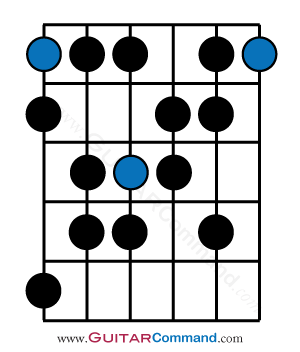
The Spanish Gypsy guitar scale is widely used in Spanish music. It has an Eastern sound, reflecting the Moorish influence on parts of Spain.
This scale is also known as the Phrygian Dominant, Freygish or Jewish scale. It can also be thought of as the fifth mode of a standard harmonic minor scale. It is shown in notation and TAB below:
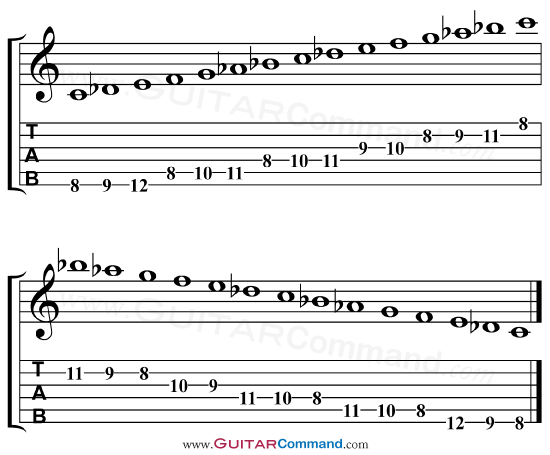
- You can see more ways of playing the scale on this page: Phrygian Dominant Scale

Spanish Guitar Scales - Phrygian Modal Scale

The Phrygian modal scale is another scale used in Spanish music, and is often used in improvisation when a Spanish sound is desired. It is the third mode of a major scale.
For more information on modal scales and how to use them visit this page: Guitar Modes).
The Phrygian modal scale is shown below in TAB & notation:
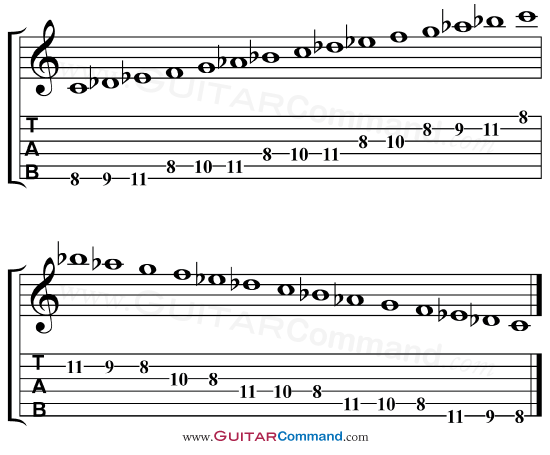
- You can see more ways of playing the scale on this page: Phrygian Modal Scale
Spanish Guitar Scales - Harmonic Minor Scale
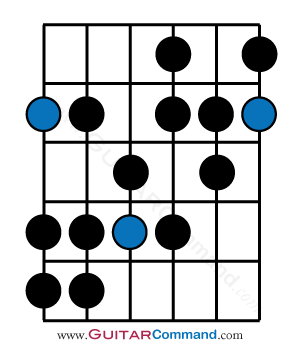
Another scale widely used in Spanish music is the harmonic minor scale. Although not strictly a Spanish guitar scale (it is used in many forms of music), the harmonic minor scale is often used in flamenco improvisation.
TAB for this scale is shown below:

- For more information on this scale see this page: Harmonic Minor Scale Guitar.
Spanish Guitar Scales Conclusion
Although there are many other scales in use in Spanish guitar music, the three scales shown above are very widely used in flamenco and traditional music of the region. Incorporate them in your playing to give your music an instant Spanish or Latin sound.
The guitar has long been associated with Spain, and is the Spanish national instrument. The origins of the modern guitar in all of its shapes and forms can be traced back to early fretted instruments played in the region.
- You can read more about the guitar's Spanish origins on this page: History Of The Guitar
- For an introduction to playing classical guitar, see How To Play Spanish Guitar
- Find out more about the Spanish guitar on this page: What Is A Spanish Guitar?
If you're interested in learning Spanish/classical guitar, then check out this page: Learning Classical Guitar. It contains useful information on the instrument, plus inspiring videos of some of the great classical guitarists.
Want To Improve Your Knowledge Of Guitar Scales?
Guitar Command has created a special album of backing tracks that allows guitarists to improvise with specific scales.
Find out more (and hear sample tracks) here: Guitar Scales Backing Tracks.
The album is also available from many other online stores, including iTunes.

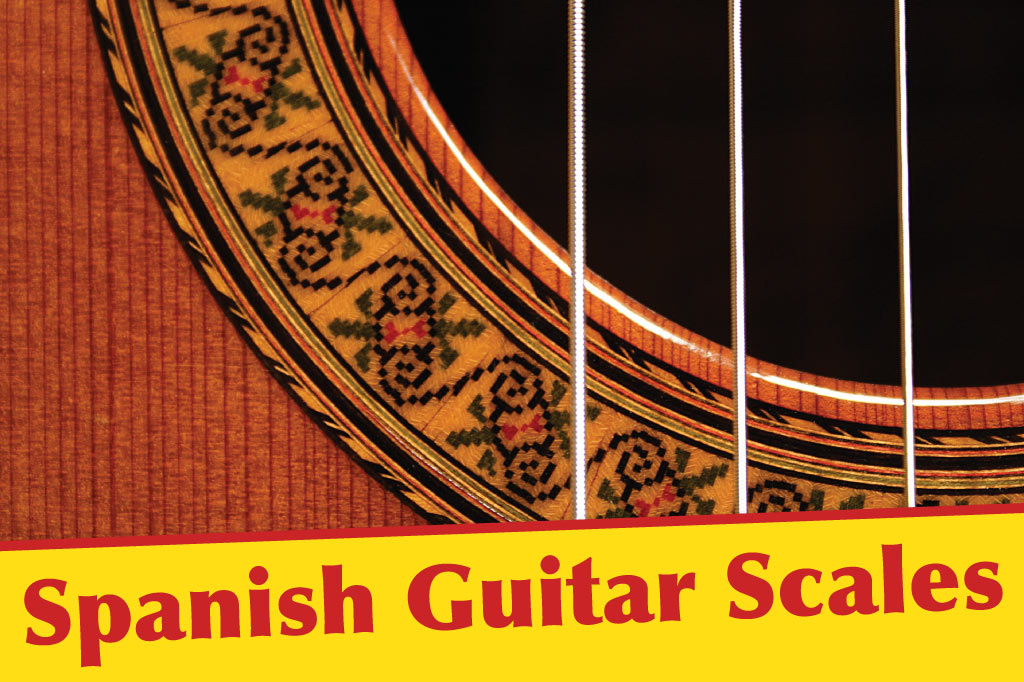

why are some notes blue
Hi Sam,
The blue notes are the root notes of the scale. The scale patterns can be used to play the same scale with any root note.
For example, if you want to play a C harmonic minor, play the harmonic minor shape so that the blue notes are over a C on the fretboard.
To play a D harmonic minor, play the same scale pattern 2 frets higher up, so that the blue notes are on D notes on the fretboard.
Great improv tool for beginners to bulerias…
Mix it up with some jazz modes…fun for hours!!
I may have my future students check this out for building
Solid falsettas…thanks!!
Amichai
Very useful, thank you.
Thanks, good intro.